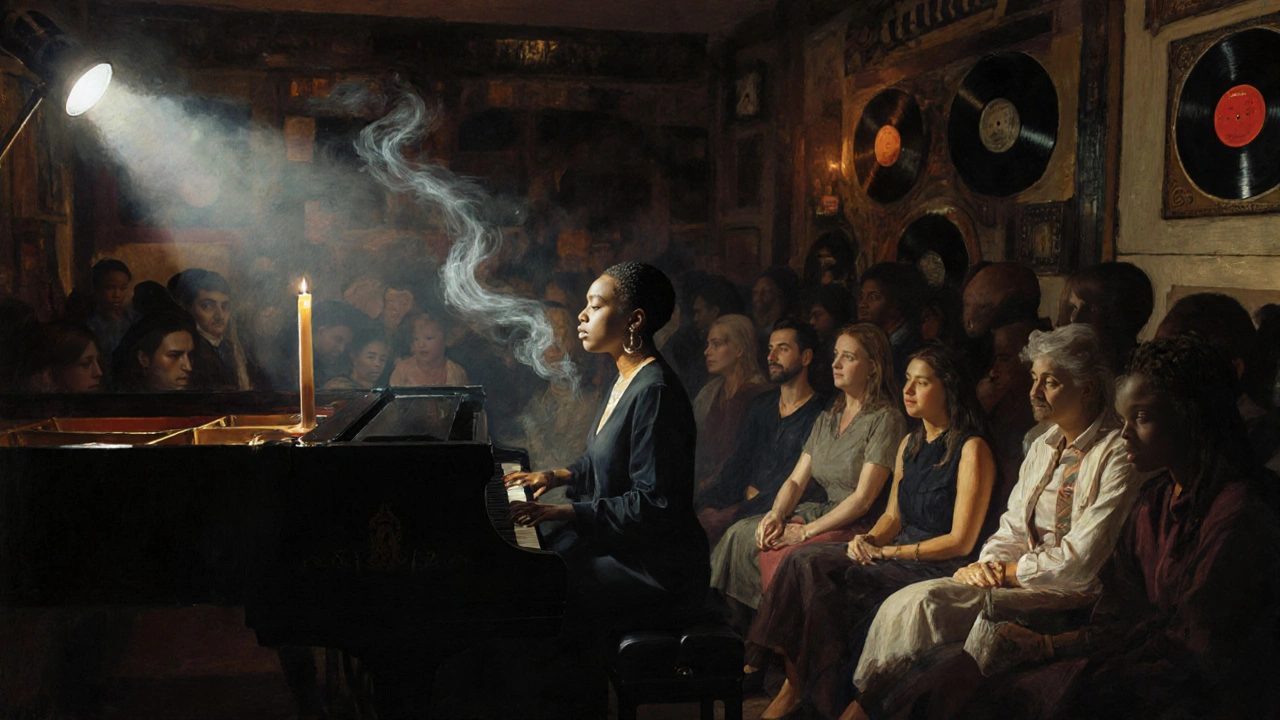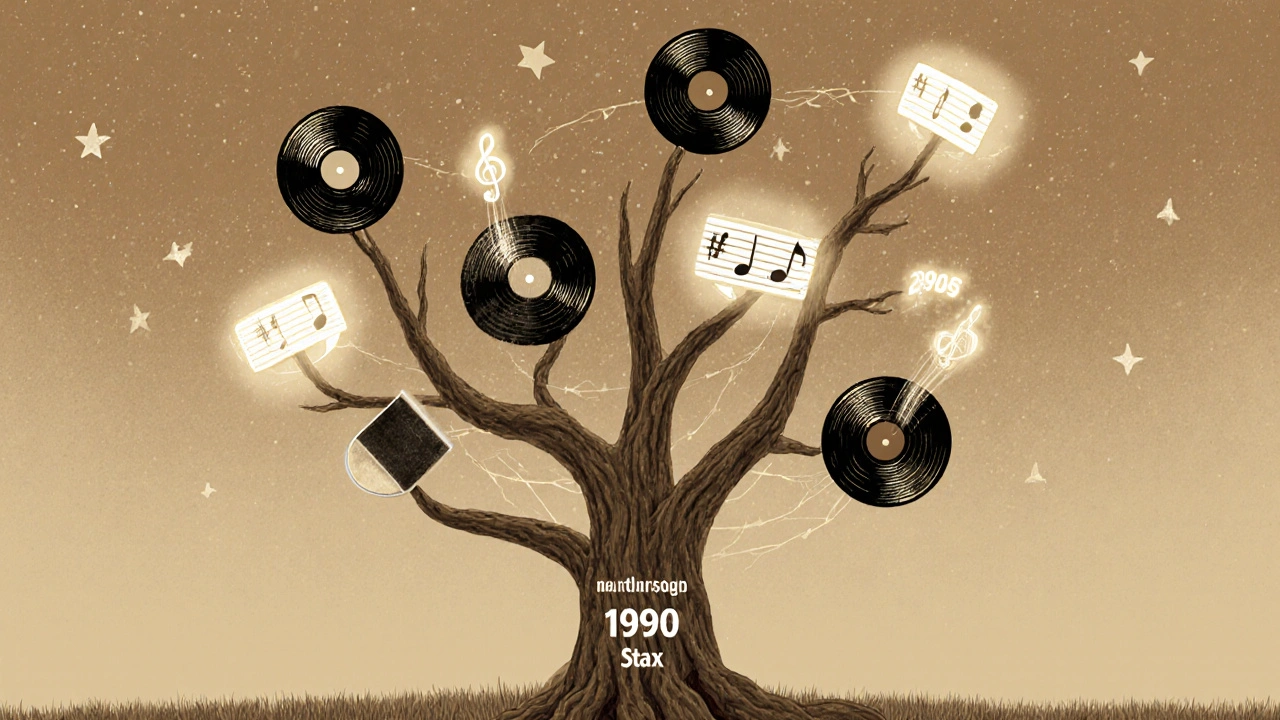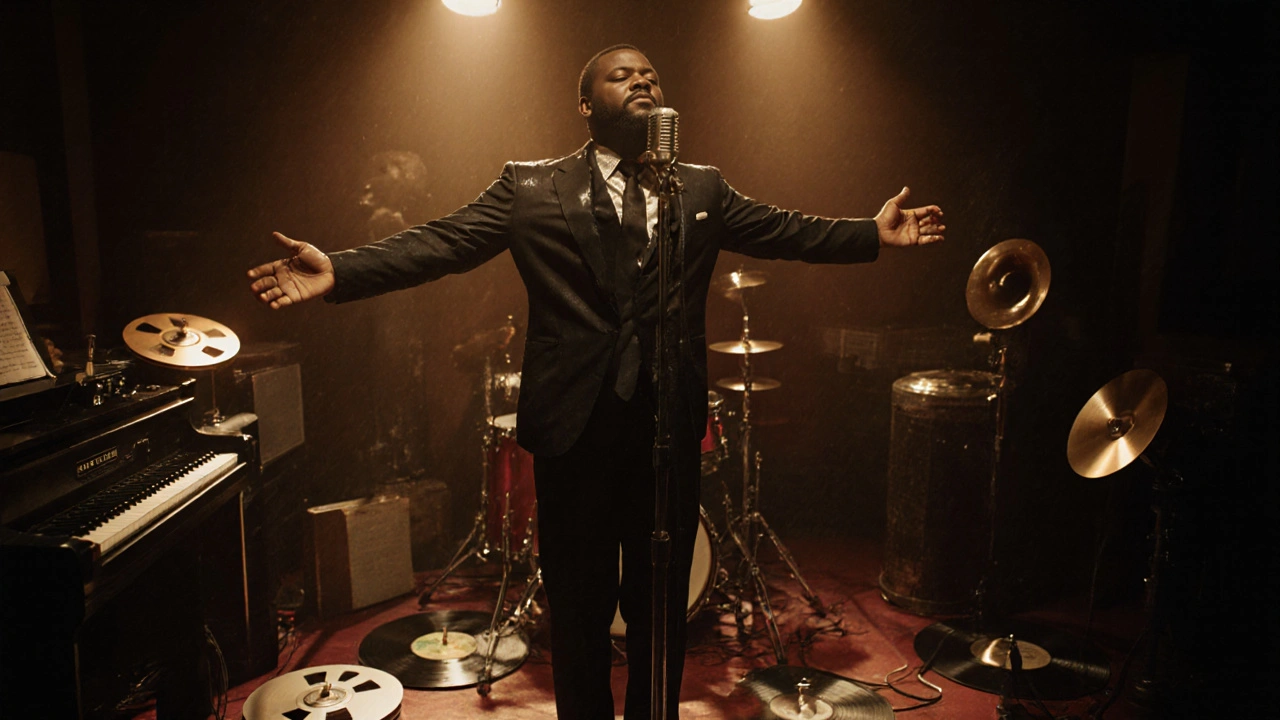Soul Music Era Identifier
How to Use This Tool
Select the characteristics of a soul song or artist to identify which era it most closely represents. Based on the article's description of soul music evolution.
Soul Era Identification Result
Soul music didn’t just emerge from the church pews and street corners of the 1950s-it exploded out of them. It was raw, it was real, and it carried the weight of a people’s struggle, joy, and resilience. Today, soul music isn’t just a relic of the past. It’s breathing again, louder than ever, in the voices of new artists and the beats of old-school revivalists. This isn’t nostalgia. It’s a rebirth.
Where Soul Music Began
Soul music was born when gospel met rhythm and blues. In the late 1940s and early 1950s, Black churches across the American South pulsed with call-and-response singing, Hammond organs, and emotional delivery. Artists like Ray Charles took those church sounds and mixed them with the grit of blues and the groove of R&B. His 1954 hit I Got a Woman wasn’t just a song-it was a declaration. He didn’t just sing about love; he preached it like a sermon.
By the early 1960s, two labels defined the sound: Motown in Detroit and Stax Records in Memphis. Motown, led by Berry Gordy, polished soul into radio-friendly gold. The Supremes, Marvin Gaye, and Stevie Wonder delivered tight harmonies, orchestral arrangements, and danceable beats. Their music crossed racial lines not because it was diluted, but because it was universal. You didn’t need to be Black to feel the ache in Marvin’s What’s Going On or the joy in Diana Ross’s Stop! In the Name of Love.
Stax, on the other hand, kept it rougher. Less polish, more sweat. Otis Redding’s voice cracked with urgency. Aretha Franklin, who started at Columbia but found her true voice at Atlantic Records, turned Respect into a civil rights anthem. Her 1967 version wasn’t just a cover-it was a revolution. The horns, the backing vocals, the way she belted out the word “respect”-it wasn’t singing. It was demanding.
The Decline and the Quiet Years
By the late 1970s, disco took over the charts. Funk got louder. Hip-hop started sampling old soul records. Soul music, as a dominant force, began to fade. Record labels stopped investing in it. Radio stations stopped playing it. Younger listeners moved on. By the 1990s, soul felt like something your parents listened to.
But it never died. It just went underground.
In cities like Atlanta, Philadelphia, and London, artists kept the flame alive. D’Angelo dropped Brown Sugar in 1995-slow, sensual, and dripping with live instrumentation. Erykah Badu brought neo-soul into the mainstream with her debut Baduizm in 1997. She didn’t just sing soul; she reimagined it. Her voice floated over jazzy chords, layered with vinyl crackle and live bass. It wasn’t retro. It was evolution.
And then came Alicia Keys. Her 2001 hit Fallin’ brought piano-driven soul back to the top of the charts. She didn’t need auto-tune. She didn’t need flashy production. Just her voice, her hands on the keys, and a room full of emotion.

The Modern Resurgence
Fast forward to 2025, and soul music is everywhere again. Not as a trend, but as a necessity.
Artists like Leon Bridges, H.E.R., and Anthony Hamilton are selling out arenas. Bridges, raised in Texas, sounds like he stepped out of a 1964 Stax session. His 2015 album Coming Home used analog tape, vintage mics, and no digital effects. It didn’t sound like a throwback-it sounded like truth.
H.E.R. won Grammys not for chasing pop trends, but for reviving the slow-burn ballad. Her 2024 album Back of My Mind features tracks that could’ve been written in 1972, but feel more urgent now. In a world of algorithm-driven playlists, her music demands silence. You have to sit down. You have to listen.
Even international artists are jumping in. In the UK, Yebba and Arlo Parks are blending soul with indie rock and spoken word. In Australia, artists like Tash Sultana and Julia Jacklin are weaving soul into their folk and alt-pop sound. Soul isn’t American anymore-it’s global.
Why now? Because people are tired of perfection. They’re tired of auto-tuned voices and beats made in boxes. They want something that feels human. Soul music doesn’t hide flaws-it turns them into power. A cracked note isn’t a mistake. It’s a heartbeat.
What Makes Soul Music Different Today
Modern soul isn’t just about the sound. It’s about the intention.
- Live instrumentation over samples-bass lines played, not programmed.
- Vocal runs that aren’t copied from YouTube tutorials but born from feeling.
- Lyrical honesty about mental health, identity, love, and loss-not just romance.
- Minimal production. No eight layers of synths. Just voice, guitar, keys, horns, and space.
Compare a 2024 soul track like “Love Me Again” by Yola to a 2010 pop hit. One feels like a conversation. The other feels like an ad.
Streaming platforms have helped. Algorithms can’t fake emotion. When listeners crave authenticity, soul music rises to the top. Spotify’s “Soul Revival” playlist has over 2.1 million followers. YouTube channels dedicated to vintage soul recordings get millions of views-not from older fans, but from Gen Z listeners discovering Otis Redding for the first time.

Why Soul Music Still Matters
Soul music was never just about music. It was about survival. It gave voice to people who were told to stay quiet. Today, it does the same.
Young Black artists use soul to reclaim their narratives. LGBTQ+ singers use it to express love without fear. People dealing with anxiety, grief, or isolation find comfort in a voice that doesn’t sugarcoat pain.
In Perth, where I live, a monthly soul night at a small bar in Northbridge draws crowds of all ages. Not because it’s trendy. But because when the lights go low and the horns start to wail, everyone in the room feels less alone.
Soul music doesn’t need a comeback. It never left. It just waited for us to remember how to listen.
How to Start Listening to Modern Soul
If you’ve never really listened to soul-or think it’s all oldies-start here:
- Listen to Traveller by Chris Stapleton-country soul, raw and real.
- Play Good News by Megan Thee Stallion (feat. SZA)-hip-hop soul with gospel roots.
- Check out Worthy by Bettye LaVette-77 years old, still tearing it up.
- Watch the documentary Soul Power (2008)-live footage from a 1974 Zaire concert with James Brown, B.B. King, and Celia Cruz.
- Follow the label Daptone Records-they record everything on analog tape, just like the old days.
You don’t need to understand the history to feel it. But once you do, you’ll hear it everywhere-in the way someone sings in the shower, in the quiet hum of a late-night drive, in the silence between heartbeats.
What’s the difference between soul music and R&B?
Soul music comes directly from gospel and is defined by emotional vocal delivery, call-and-response patterns, and live instrumentation. R&B, or rhythm and blues, is broader-it includes soul but also funk, pop-R&B, and hip-hop-influenced styles. Think of soul as the heart of R&B. Aretha Franklin is soul. The Weeknd is R&B.
Who are the most important soul artists today?
H.E.R., Leon Bridges, Yola, Anthony Hamilton, and Jorja Smith are leading the modern movement. They blend classic soul with contemporary themes and production. Don’t overlook newer names like Koffee, who brings reggae-soul to global audiences, or Sudan Archives, who mixes soul with electronic and folk elements.
Is neo-soul the same as soul music?
Neo-soul is a subgenre that emerged in the 1990s. It keeps the soul feel but adds jazz, hip-hop, and alternative influences. Artists like D’Angelo, Erykah Badu, and Lauryn Hill pioneered it. Today, the line between neo-soul and modern soul is blurry. Most new artists don’t label themselves-they just make music that feels real.
Why do modern soul songs sound so different from 1960s ones?
They’re not always different. Many modern artists use the same recording techniques-tape machines, live drums, analog amps. The difference is in the lyrics and context. 1960s soul spoke to civil rights and love. Today’s soul speaks to identity, mental health, climate anxiety, and self-worth. The emotion is the same. The world just changed.
Can you make soul music without being Black?
Yes, but it requires deep respect and understanding. Soul music grew from Black American pain, joy, and resistance. Non-Black artists who make soul music must honor that history-not appropriate it. Artists like Chris Stapleton and Adele have succeeded by studying the roots, collaborating with Black musicians, and never pretending to speak a story that isn’t theirs.

